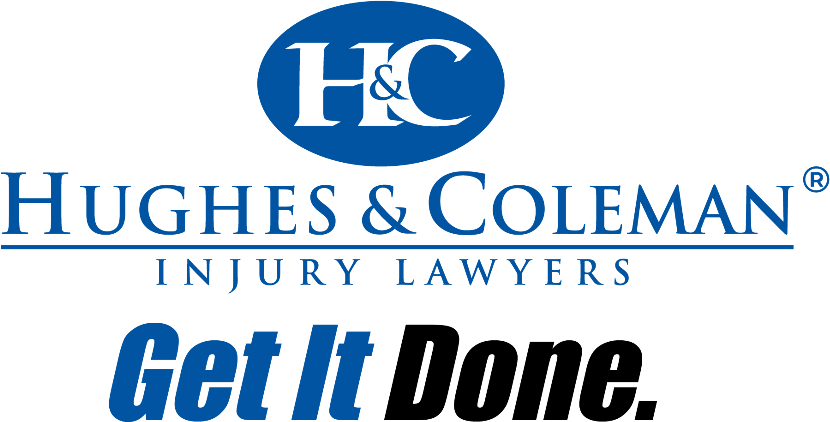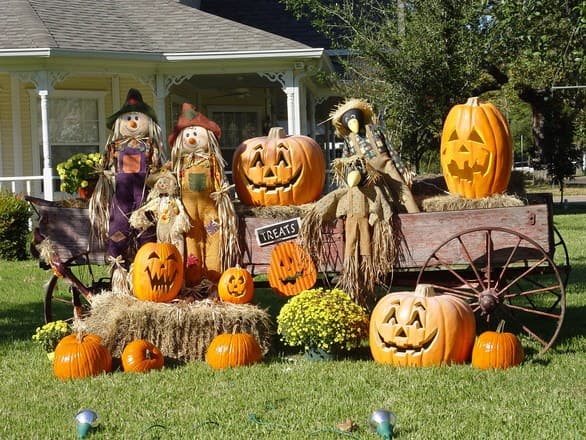-

Halloween is a night that’s all about the illusion of danger and scary things happening. However, as much as we love a good, gory horror movie, we don’t want to end up looking like we are in one, no matter how much it improves the realism of our costumes.
For homeowners, this risk means considering the question of homeowner’s liability when having people come visit your house. Any signs that you are giving out candy to trick-or-treaters, which can include having themed decorations and a lit porch light, can make them “invitees” to your property. Following that logic, any injury they incur could potentially be determined your fault by a personal injury lawyer under premises liability law.
So, in order to have as much fun as possible while lessening the chance of a nasty injury claim, homeowners should think carefully about the state of their property and how any decisions they make could spell risk to uncoordinated kids in bulky costumes.
Providing a Safe Path and Safe Conditions for Trick or Treaters
Before they worry about filling up bowls with candy, homeowners should first take the time to look at their yard. Any hazards like uneven paving, hard-to-see lawn decorations, low planters or loose items like garden hoses should be removed completely. Things that cannot be removed, such as a high step over the curb to the lawn, must be well-lit to make any invitees wary of the hazard.
Everyone should remember that since kids are often in masks that obstruct their view and they may have bulky, unwieldy costumes, some objects that would not normally be a hazard become so on Halloween. Scary!
Also, homeowners should take care to recognize fire hazards in their decorations. For instance, all Jack-o-lanterns with real candles should be literally off the beaten path and all lights and decorations should never exceed their outlet’s capacity limit.
When Prankish Homeowner Tricks Are No Treat
We all have those memories of Halloweens where one roguish neighbor would give the kids a scare right back. One classic trick involves dressing up like a human-sized decoration holding candy. When kids go to get the candy: “BOO!” High-pitched squeals ring out, candy goes flying and hilarity ensues. Except, if the child gets injured, the homeowner could be considered liable.
Deciding upon questions of legal liability comes down to three main questions:
- Did the homeowner act negligently, or in a way that violates their expected duty of reasonable care to invitees?
- Did someone get injured on their property after a negligent action, like a prank scare or a decision to not turn on the porch lights, had taken place?
- Was the injury the direct result of the negligent action?
Reasonable Care
A property owner has an obligation to protect anyone considered an invitee from hazards to the degree that any “reasonable” person would. This legal test for Ordinary Negligence cases means asking if a hazard like a sidewalk crack or an open flame could be detected and deliberately fixed or avoided by a hypothetical “reasonable” person. Failing to act like a “reasonable” person could mean that the homeowner breached their duty of care.
When actions show voluntary and conscious disregard for the safety of others, the claims could move beyond Ordinary Negligence and into Gross Negligence. Since scaring a child on a potentially hazardous environment like a porch with narrow steps could foreseeably cause injury, homeowners may potentially face Gross Negligence claims in a harsher scenario.
Damages
In order to move forward with a lawsuit, the plaintiff must have some sort of claim of damages resulting in financial loss. Possible Halloween losses would most likely involve injuries. The plaintiff must be able to document their injuries in such a way to justify their claims of monetary loss by way of medical expenses.
Proving the Actual Cause of an Injury
Fortunately for defendants, proving indisputably that they acted negligently and that an injury occurred afterwards is not enough to clinch an injury claim. Instead, the plaintiff must prove with a preponderance of evidence that the negligent behavior caused the injury.
Proving this allegation involves exploring several concepts, including cause in fact, proximate or legal cause, or intervening acts and superseding events.
Cause in fact describes a situation where, if the defending party’s actions were absent, the injury would not have occurred. Defending parties can ask themselves “Would the injury have occurred anyway without my actions?” to consider fault in terms of cause in fact.
Proximate or “legal” cause explores fault further in order to ask just how connected the homeowner’s actions were to the injury. So, they potentially acknowledge a cause in fact fault scenario, but question the degree to which the final claims are connected to the actions.
Using an extreme example, perhaps instead of a child merely falling and breaking their arm after being frightened by a prank, they bowled over their entire group who all sustained major spinal injuries. In this instance, the defense could argue that although the homeowner could have caused some injury, only extraordinary circumstances could have led to such a dire outcome, thereby lessening or removing their question of liability.
An intervening act or superseding event would refer to actions or events that came as a result of the initial incident. So, in this example, what would have been one child fracturing their arm turned into that child knocking over their trick-or-treat group who all happened to land just-so on the concrete walkway so as to cause spinal fractures. The defense and plaintiff can both consider the complexities of such intervening acts and their relation to cause in fact and proximate cause in order to establish fault.
Will Homeowner’s Insurance Cover Liability?
Simply put: it depends on the policy. Review your Coverage E, Personal Liability benefits to see how much your policy would pay out should you be found at fault. Your Coverage F, Medical Payments to Others benefits are available as compensation to injury victims regardless of fault as long as they are considered invitees.
You can learn more about potential policy coverage and concepts surrounding legal liability in this excellent post from Insurance Jouirnal.
But above all else, Halloween should be fun! So have fun, be safe, and think about reasonable steps you can take to avoid placing invitees in danger, even if it means making your lawn a little less scary this year.
Get In Touch Today!
We offer free consultations 24/7 and there will always be someone here to take your call. Call our personal injury lawyers today for a free consultation or fill out this form and we will contact you.
We serve clients across Tennessee and Kentucky and we have several offices throughout both states. See all of our locations and contact us today.


